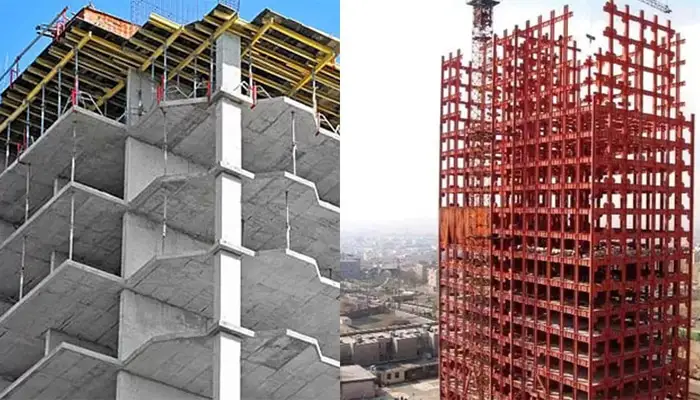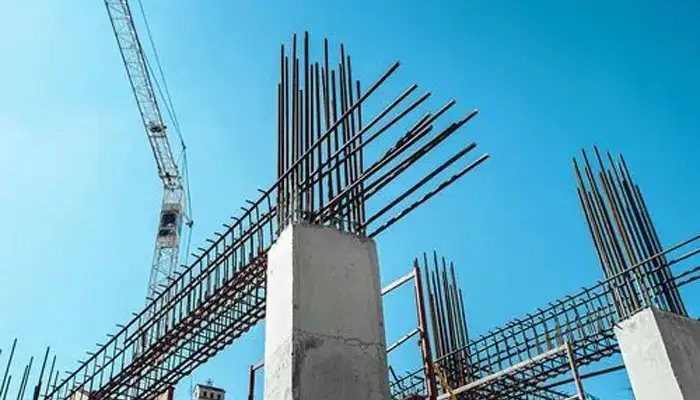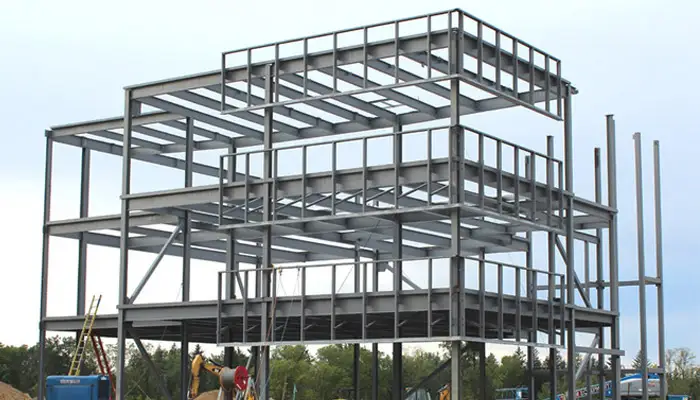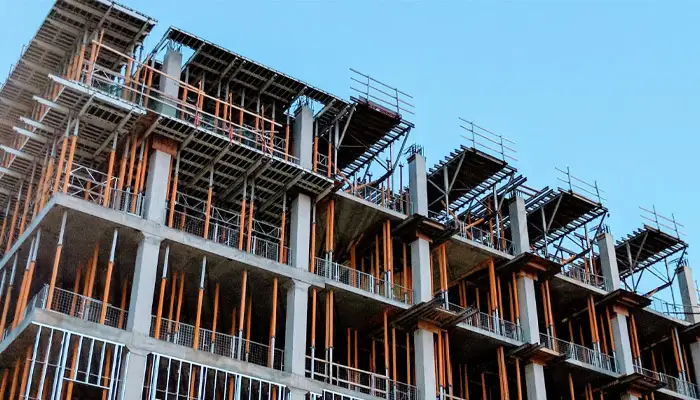Today, steel and concrete frameworks are among the most common types of building structures in Iran, each possessing various features and advantages. A building requires a specific type of framework based on its design and engineering to withstand the applied loads and ensure durability. Therefore, choosing a high-quality framework from the available steel and concrete options is not an easy task. Individuals planning to construct a building can make a decision regarding the choice between steel and concrete frameworks by examining the differences between these types. Below, we introduce some important advantages and features of both types of building frameworks. You can also consult with the engineers at Saman Dezh regarding your choice of framework type.
Advantages of Concrete Frameworks
What you will read!
ToggleBefore introducing the differences between steel and concrete frameworks, let’s review the benefits of these building frameworks. Some of the most significant advantages that arise from installing concrete frameworks in buildings include:
- High thermal and moisture resistance
- High flexural strength in both directions of the structure
- Ease of execution
- Easy connection between beams, body, and ceiling of the framework

Advantages of Steel Frameworks
To answer the question of whether steel frameworks are better than concrete frameworks, we must also recognize the advantages of steel frameworks. These advantages are outlined below:
- High structural resistance over time and long lifespan of the structure
- Fast execution of steel building frameworks
- High flexibility
- Simultaneous execution of building floors
- Ability to repair and maintain the framework
Read more: The Resistance of Steel Frameworks Against Earthquakes
Important Differences Between Steel and Concrete Frameworks
The main differences between steel and concrete frameworks are summarized below:
➕ Difference in Earthquake Resistance
Many people may mistakenly believe that using a steel-framework in a building increases its resistance to earthquakes; however, this is incorrect. Both steel and concrete frameworks provide high resistance against earthquakes and external pressures. In fact, the key to enhancing a building’s resistance lies in the accuracy of the structural design. Therefore, in terms of building resistance, the design type of the framework is more important.
➕ Difference in Lifespan
One of the main advantages of steel frameworks is their long lifespan. Concrete frameworks do not possess significant durability and longevity. The designer determines the lifespan of the framework based on the conditions of the construction materials and the framework’s resistance. For example, a designer estimates the durability of a concrete framework to be about 50 to 60 years. In contrast, steel frameworks do not face the issue of losing resistance over a long period, distinguishing them from concrete frameworks.
➕ Difference in Fire and Heat Resistance
The level of a building framework’s resistance to heat is an important criterion and should be considered when selecting the best building framework. It is essential to know that steel frameworks lose their resistance when exposed to heat. In contrast, concrete frameworks have a high resistance to heat and fire.
Today, engineers and specialists are working to enhance the fire and heat resistance of steel frameworks through various methods, but concrete frameworks still offer significant fire resistance, which is considered an advantage for them.

➕ Difference in Ease of Framework Installation
Both bolted steel frameworks and concrete frameworks can be installed easily. The execution of steel frameworks is straightforward, but the sensitivity of cutting operations for the metal parts, welding these parts together, transportation, and installation requires a high level of skill, precision, and expertise. Therefore, only specialized individuals can execute steel frameworks on-site. The execution of concrete frameworks also requires significant skill, expertise, and precision, but this skill and precision are relatively less compared to steel frameworks. Given the current conditions in the country and the lack of specialized individuals in the field of executing steel and concrete frameworks, this is considered an advantage for concrete frameworks.
➕ Difference in Construction Time for the Framework
Another significant difference that influences your choice between steel and concrete frameworks is the time required for execution. Fortunately, by selecting steel frameworks, you can frame different floors of a building simultaneously. This feature of steel frameworks accelerates the construction process. If you use prefabricated steel frameworks produced in factories, the speed of installation and execution will undoubtedly increase significantly.
In the case of concrete structures, it is necessary to proceed to the second floor’s framework after completing the first floor and continue this process. As a result, the speed of executing concrete frameworks is less than that of steel frameworks. It is worth mentioning that the high speed of executing steel frameworks also reduces overhead costs and time-related expenses.
Read more: Understanding Steel Framework Connections
➕ Difference in Construction Costs
The cost of constructing a steel or concrete framework in a project varies. Generally, steel frameworks are executed at a higher cost due to the material requirements for steel compared to concrete frameworks. However, this cost varies based on fluctuations in the price of steel in global markets and currency rates in different countries. Concrete structures are generally less expensive than steel structures; however, if we want to construct a durable and highly resistant building framework, we will require steel frameworks. Interestingly, these frameworks reduce repair costs over time. However, if your initial capital for constructing a building is low, concrete frameworks are a cost-effective choice.

➕ Difference in Salvage Value of Steel and Concrete Frameworks
In general, the salvage value of buildings and their demolition is not highly regarded in our country. Individuals who have chosen concrete frameworks for their buildings may incur losses and face high costs during the demolition process. In contrast, steel frameworks have a higher salvage value due to their specific steel materials, and the steel used in these frameworks can be reintroduced into the recycling process.
Which Should I Choose? Steel or Concrete Framework?
If you are unsure about which framework to choose between steel or concrete for your building, you should consider your budget, your expectations, the type of building design, and the quality level you desire. Sometimes a contractor might opt for concrete frameworks because they have a limited budget for executing the building framework, without considering the durability or longevity of the structure. Meanwhile, many contractors strive to take advantage of the unique benefits of steel frameworks, aiming to create a durable, resilient, and strong structure with their assistance.

You dear ones who are concerned about the strength, resistance, and durability of your building’s steel framework can benefit from the services of Saman Dezh, the best executor of various steel frameworks. These services are provided with the high precision and expertise of the specialists and engineers at Saman Dezh, enhancing the durability of steel structures. For more information, please contact us.
Read more: Price and execution of prefabricated steel frameworks
Conclusion
In this article, we examined the differences between steel and concrete frameworks to help individuals choose between a steel or concrete building framework more easily. These frameworks differ in terms of earthquake resistance, fire resistance, longevity, construction costs, execution time, and ease of installation. After reviewing the differences between these two types of frameworks, you can select a suitable framework based on your project type. If you intend to execute steel frameworks in your project, you can take advantage of Saman Dezh’s services in the execution of various steel frameworks.


